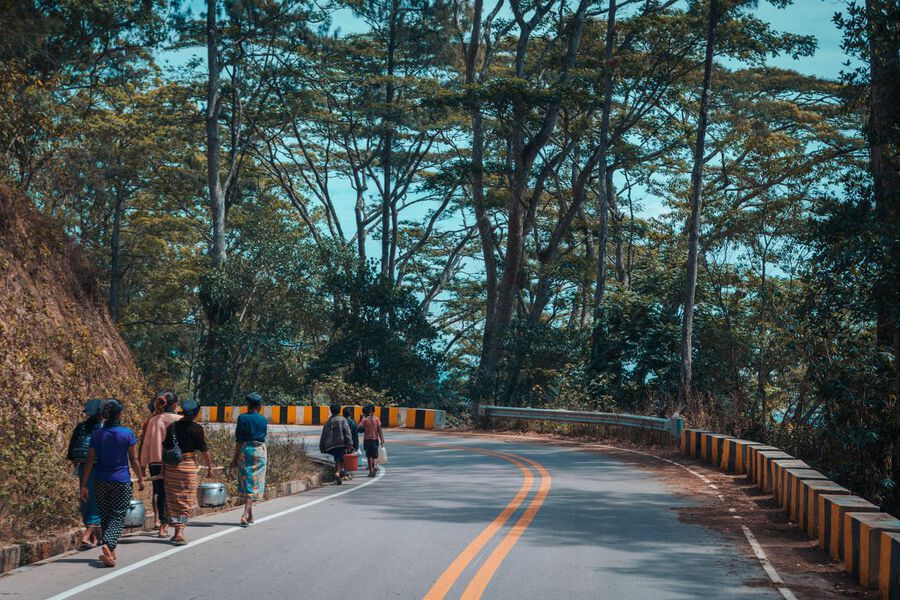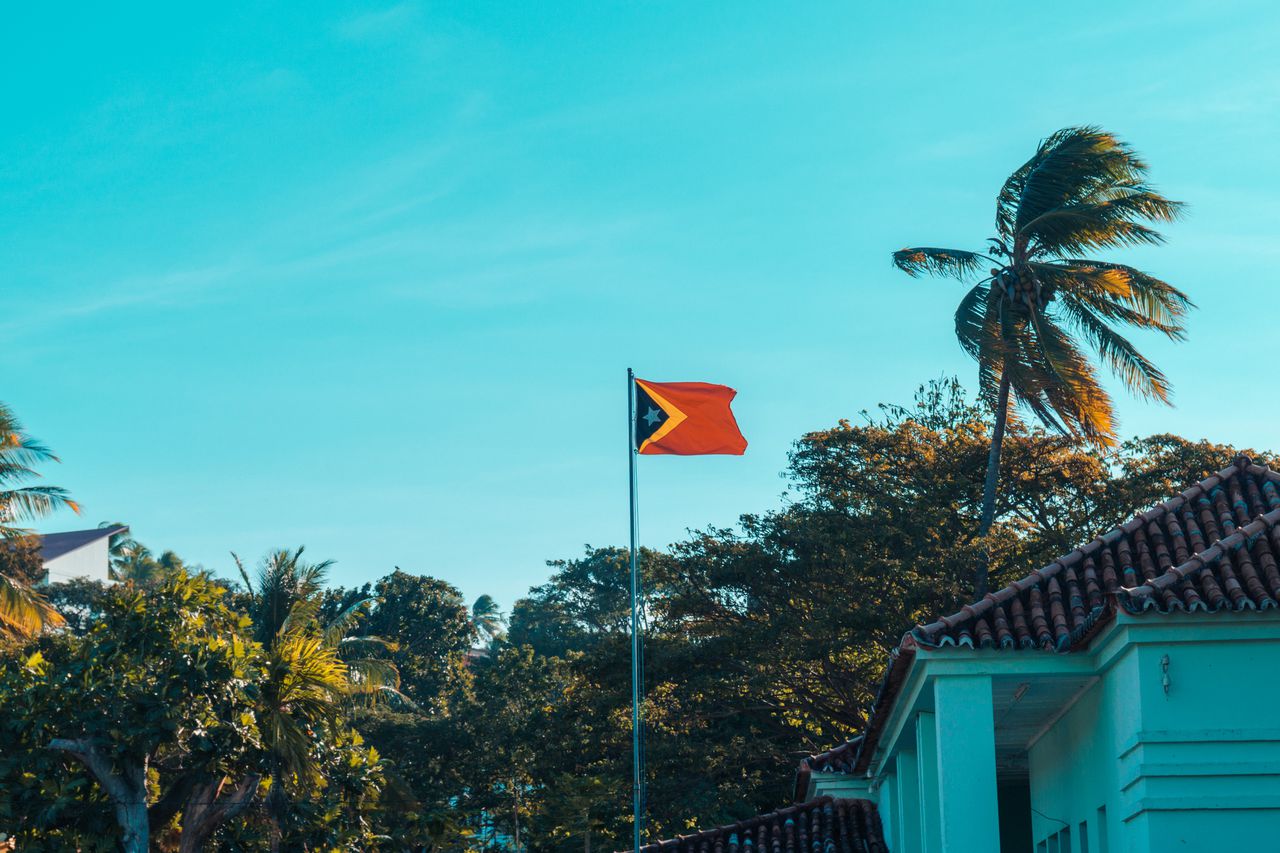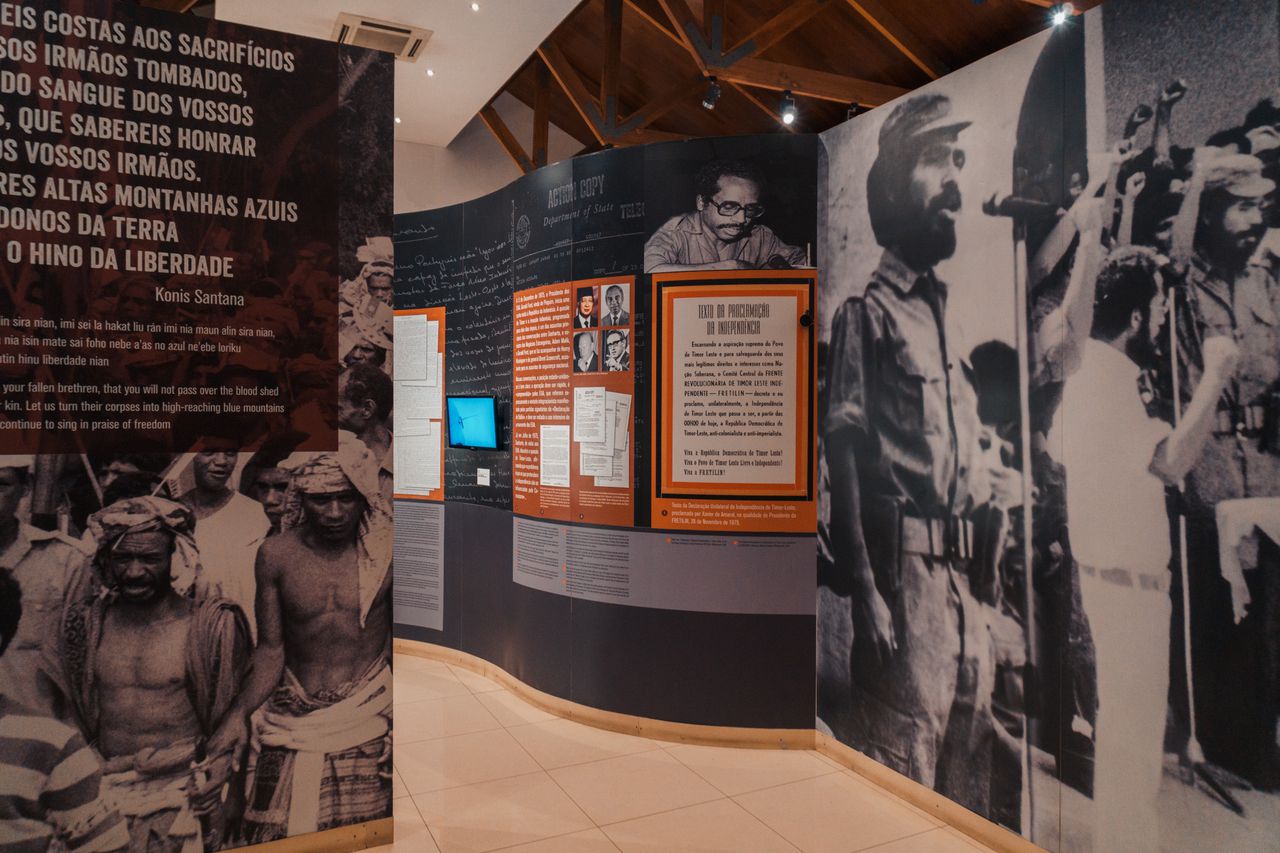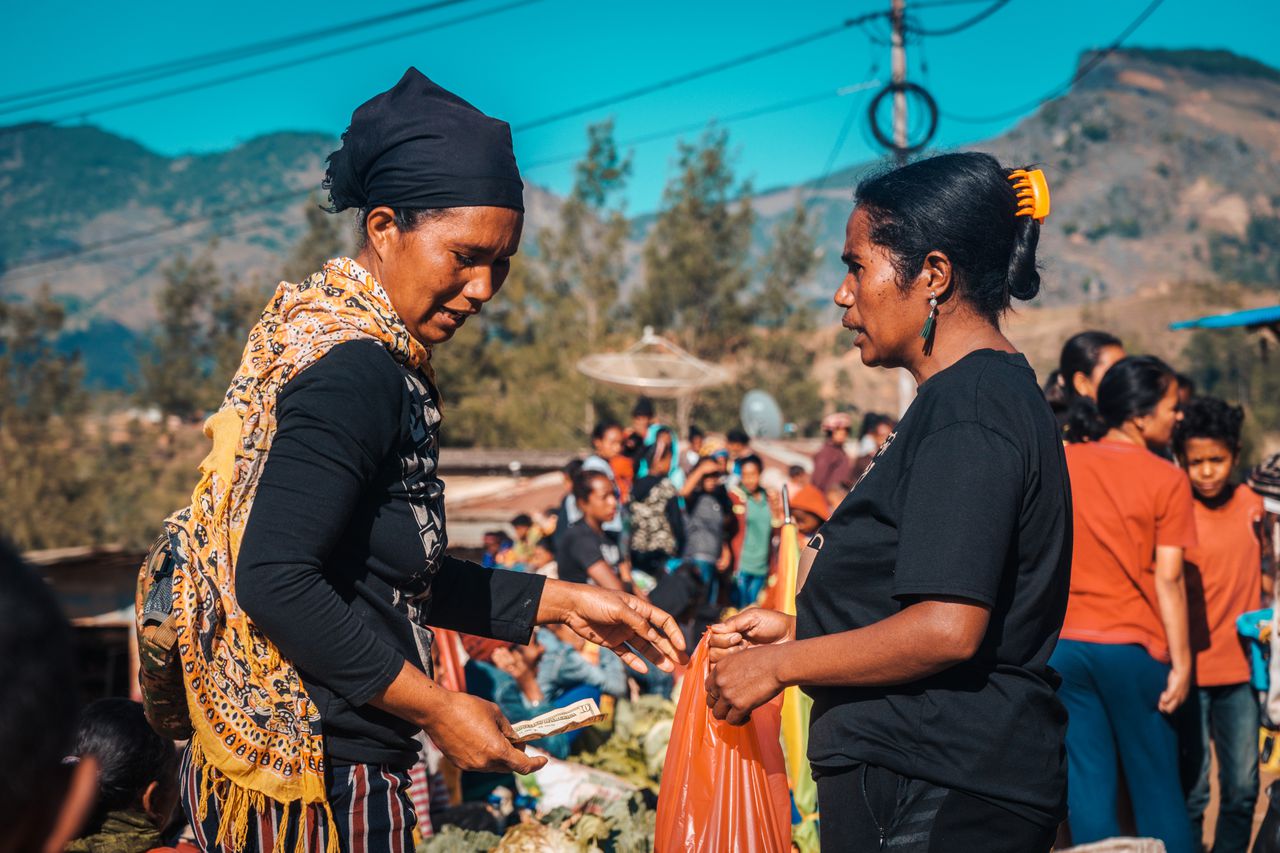When people ask me where I have been in Southeast Asia, I often get blank stares whenever I mention my travel experience in East Timor or, as it is known in the country, Timor Leste. This is understandable as the country itself is pretty much unknown to most people due to its relative newness, only gaining independence in 2002 from Indonesia.
Timor-Leste is situated between Indonesian West Timor and Papua, which, in turn, places the country within the Southeast Asia bloc. The country itself only sees a little over 60,000 tourists per year. In comparison to its neighbor Indonesia, which gains over 1.32 million arrivals annually, Timor-Leste is barely on anyone's list of countries people plan to visit when they are in Southeast Asia.
Due to that fact and my curiosity about how the country came to be, I decided to embark on a journey to find out the story behind Timor Leste: how it came to be, why it is so poor, and how its future is looking. Here is a brief story of Timor Leste.
The Ancient Kingdoms of Timor
Even though Timor-Leste, as a country, did not come into existence until the Portuguese colonized it in the 16th century, the island was populated by around 60 small kingdoms that thrived on the trade of sandalwood with foreign merchants from China and India. Due to the abundance of sandalwood, the island attracted European explorers, which led to the Portuguese colonizing the island.
The Portuguese Era
Pousadas are a common Portuguese style buildings scattered around Timor-Leste. They were built by the Portuguese for the Portuguese and are often on top of a hill overlooking the city and isolated from the poor, a typical colonial thing to do. Thankfully, the Portuguese left and the houses are being turned into guest houses for tourists.
During the colonial era in the 17th century, the island saw two European powers, the Portuguese and the Dutch, competing for control over the island without yielding any results. Eventually, they decided to split the island into two, with the Portuguese controlling the eastern part of Timor island and the Dutch controlling the western half and the rest of Indonesia.
Under Portuguese rule, Timor-Leste was neglected and exploited. It had seen no investment or development of any kind from the Portuguese, except where it mattered to them: the sandalwood and coffee exports. It got even worse in the early 19th century when Portugal's economy took a dive, and the colonies were heavily taxed to support the faltering economy. And then, World War 2 came around.
No time to read?
Don't worry. You can save this page to Pinterest and come back later.
Timor-Leste During World War 2
The Timorese and the Allied forces ran into the mountains and form a resistance force to try to stop the Japanese forces to no avail.
Like most Southeast Asian countries during that time, the Japanese took control away from the European powers, and Timor-Leste was integrated into the Greater East Asia Co-Prosperity Sphere under Japanese Empire rule. The East Timorese did not go without a fight, though, as they ran into the mountains, allying themselves with the Portuguese and the Allies for the first time, and launched guerrilla warfare against the Japanese.
It was unsuccessful, however, and the Japanese eventually drove the Allies off the island. After the war, the Japanese surrendered their occupied territories, and the Portuguese seized the opportunity to reinstate their control over Timor-Leste once again.
Timor-Lest Short Lived First Indepedence
The Portuguese faced major resistance from the East Timorese people, which led to a military coup in 1975. Eventually, the Portuguese abandoned their colonies and the people of Timor Leste began establishing political parties for the first time.
During the political turmoil that followed, the FRETILIN, a pro-independent political party, resisted a coup attempt by the pro-Portuguese party (UDT) and made a unilateral declaration of independence, thus making the country fully independent for the first time.
The joy of independent Timor-Leste was short-lived, though, as the Red Scare swept over the Western world.
The Indonesian Invasion
The fear of communism swept over the Western world as the US admitted defeat during the Vietnam War and evacuated its last troops from Saigon, giving way to communism in Southeast Asia. The Western world was in panic mode, and while Timor-Leste was celebrating its independence, Indonesia had a different plan for the country.
Indonesia, after witnessing the coup, saw the opportunity to annex Timor-Leste into Indonesia as its 27th province. Utilizing the fear of communism to its advantage, Indonesia influenced the Western world, gaining its support and receiving military equipment from the US.
Indonesia then decided to move its troops towards the border and began planning for an invasion under the pretext of anti-colonialism. Timor-Leste anticipated this move and issued multiple messages to the US for support, all of which were ignored.
1975 was the year Timor Leste both gained and lost independence to the Portuguese and Indonesian respectively.
Right before the invasion, the Indonesian president, Suharto, convinced US president Ford to understand the purpose of Operation Komodo and to not take action. Ford replied, "We will understand and not press you on the issue. We understand the problem and the intentions you have." The next day, in the peaceful morning of December 7, 1975, the invasion began, marking the largest military operation ever carried out by Indonesia to date.
The Indonesian troops began their invasion from the west, taking control of the radio tower, severing communication with the outside world. By noon, the Indonesian troops had overthrown the FRETILIN government and gained control of Dili, the capital city of Timor-Leste. The next day, they also took control of Baucau, the second-largest city.
The UN condemned the move but did absolutely nothing to help the East Timorese people, while the Australians believed that Timor-Leste cannot govern themselves and were better off being part of Indonesia. Everyone turned a blind eye towards the annexation, and Timor-Leste became part of Indonesia for the next 26 years.
The Indonesian Occupation
Indonesia ruled Timor-Leste with violence and brutality. According to Indonesia's official statistics, Timor-Leste had 653,211 people in 1974, and the number dropped dramatically to 498,433 people in 1975. Timor-Leste had lost over 23% of its population during the first year of Indonesia's occupation alone.
The East Timorese people didn't give up so easily, though, as they ran for the hills and started arming themselves for resistance. To counter that, the Indonesian troops launched the "Encirclement and Annihilation" campaign, which annihilated the resistance camps left and right.
Although the resistance efforts proved unfruitful against the Indonesian army, the ideology thrived and inspired a militant named Xanana Gusmão to begin the process of organizing a resistance network that laid the groundwork for the turning point of Timor Leste.
The Turning Point
The fight for independence with Indonesia went on for many years, with Indonesian troops committing countless atrocities, while the world turned a blind eye. It was not until 1991 when the world started to realize what was happening in Timor Leste.
During a UN visit in October 1991, which was later canceled due to Indonesian objection, the Timorese people took advantage of the foreign press presence in the city by staging a demonstration in Dili. The demonstration turned violent, and while the cameras were rolling, the Dili Massacre occurred as the protesters were stabbed and gunned down while being enclosed inside the Santa Cruz cemetery. Over 250 people were killed that day.
After the massacre was caught on tape, the videos were smuggled out to Australia and broadcast around the world. In horror, the world reacted and united to come to East Timorese aid, with activists organizing protests everywhere.
The US, Australia, and Portugal condemned Indonesia, which led to the resignation of Indonesian President Suharto and a winning vote for Xanana Gusmão as the first president of the newly independent Democratic Republic of East Timor in 2002.
The Future is Still Grey But..
Even though the fight for independence for the East Timorese people was long and brutal, there are still many fights ahead for them. As I spoke to the East Timorese people, they expressed grave concern over the country's future.
In 2007, after Xanana Gusmão declined another presidential term, an election was held, and José Ramos-Horta was elected. However, his opponents formed a coalition and called the election a sham. Violence ensued with an attempted assassination of the elected president, leaving the country without a leader until now.
As I traveled around the country, I witnessed people living in extreme poverty, garbage everywhere, and basic infrastructure, like roads, not being maintained and left for the locals to make the best out of it.
"We haven't had any ruling government in years. In fact, we just had 2 elections in the past year alone!" a very friendly East Timorese woman told me when I asked her what she thinks about her government.
As a tourist, I was curious as to why the government is not investing in tourism, since Timor Leste has proven to be one of the best places to go diving, snorkeling, and witness wonderful marine life without having to deal with tourists. The mountains of Timor Leste are also begging for adventurers to climb.
I then proceeded to ask her why, and she simply said, "It's not their priority right now." "What could possibly be their priority?" I asked, curiously and naively. She said, "To establish stability, which may or may not come anytime soon."
Even though, there is still a long way to go, the potentials for Timor-Leste to become a big travel destination are there.
For a person living in a country with an established economy, stability may be taken for granted. However, when it comes to a newly created country like Timor-Leste, unfortunately, stability and prosperity do not come bundled with independence.
Timor-Leste still has a long way to go to become self-reliant and a tourist destination, but the potentials are there. When stability is finally established, one can only hope that prosperity shall follow.
That is it for A Brief History of Timor Leste. Have we missed anything? Have you found the guide useful? Let us know in the comments below!
Now that we have all the information we need, it's time to plan your trip to Timor Leste! Here are some resources to help you get your trip going:
Are you planning to travel to Timor Leste independently? Be sure to check out my guide on How To Plan A Backpacking Trip here.
Further Reading for Timor Leste
I hope you found this travel guide useful. If you are looking for more articles about Timor Leste, here is a selection of articles to help you plan your trip:
- Looking for a complete itinerary and travel guide for Timor Leste? 10 Days Itinerary to Timor Leste.
- Dili is the capital city where you will probably begin your journey into one of the least traveled countries in Asia. To help you get acquainted with Timor Leste, check out our one-day travel guide on things to do in Dili.
- Atauro Island is the best place to go snorkeling in Timor Leste. There is not much information out there, so here's a quick guide on how to get to Atauro Island from Dili.
- Once you get to Atauro island, be sure to check out our travel guide on things to do on Atauro Island.
- Looking to go off the beaten path in Timor Leste? Baucau is a great place to break your trip towards Jaco Island. Here's a quick guide on things to do in Baucau.
- Done with the beaches in Timor Leste? Why not explore the untouched mountain region of Timor Leste? Here's a complete travel guide on things to do, where to stay, and how to get to Maubisse.
- Timor Leste is not the easiest country to travel in. I struggled to stay calm as I made my way to Baucau on a public bus in mid-summer. Here’s my story on real adventure and whether it was worth it.
- For all articles about Timor Leste, visit the Timor Leste Travel Guide page.
- Looking for more travel guides for Southeast Asia? You can find more on my Southeast Asia Travel Guide page.
- For more of my travel guides, visit my Destinations page.













5 Comments
Can a UK citizen do a visa run from Indonesia to temir and what visa is required to enter temir for a ik citizen who has been in indonesia for a year...
I meant 'temor' and 'uk'
For the UK citizen, you will need to fly into Dili and get a visa-on-arrival at the airport for 30 USD and you should be able to enter the country. For more info, please consult the official embassy website: https://migracao.gov.tl/html/sub0301.php
I just want to say thank you. I feel like I have learned so much reading this. I am an American and I will be praying for Timor Leste! I will contact my representatives in the US government and demand they support Timor Leste in finding true independence. Freedom is not free. The people of Timor Leste know this and deserve to have a free and independent nation. I will try to make more people aware of Timor Leste's struggle for freedom and independence. May God bless Timor Leste!
Thank you for reading the article and for the comment Wade! Glad you enjoyed reading it. The story of Timor Leste is truly tragic and inspiring at the same time, one of the reasons why I wanted to visit the country in the first place. Thanks again for the comment!